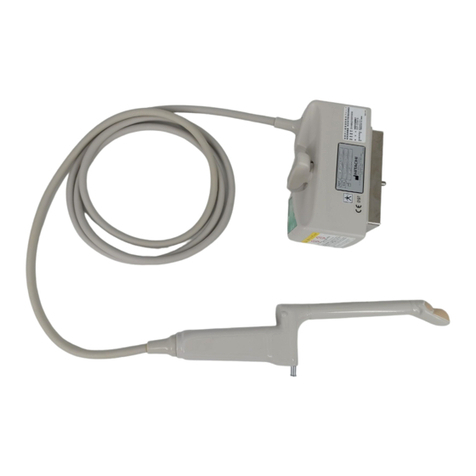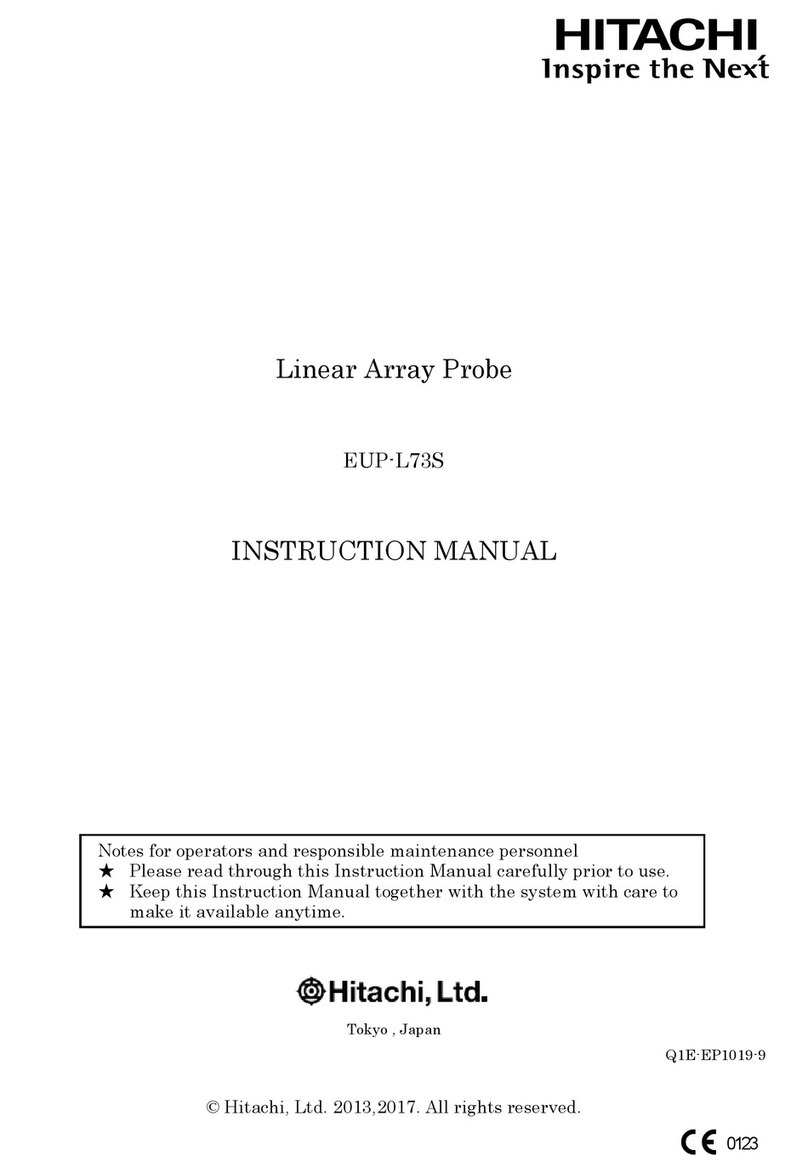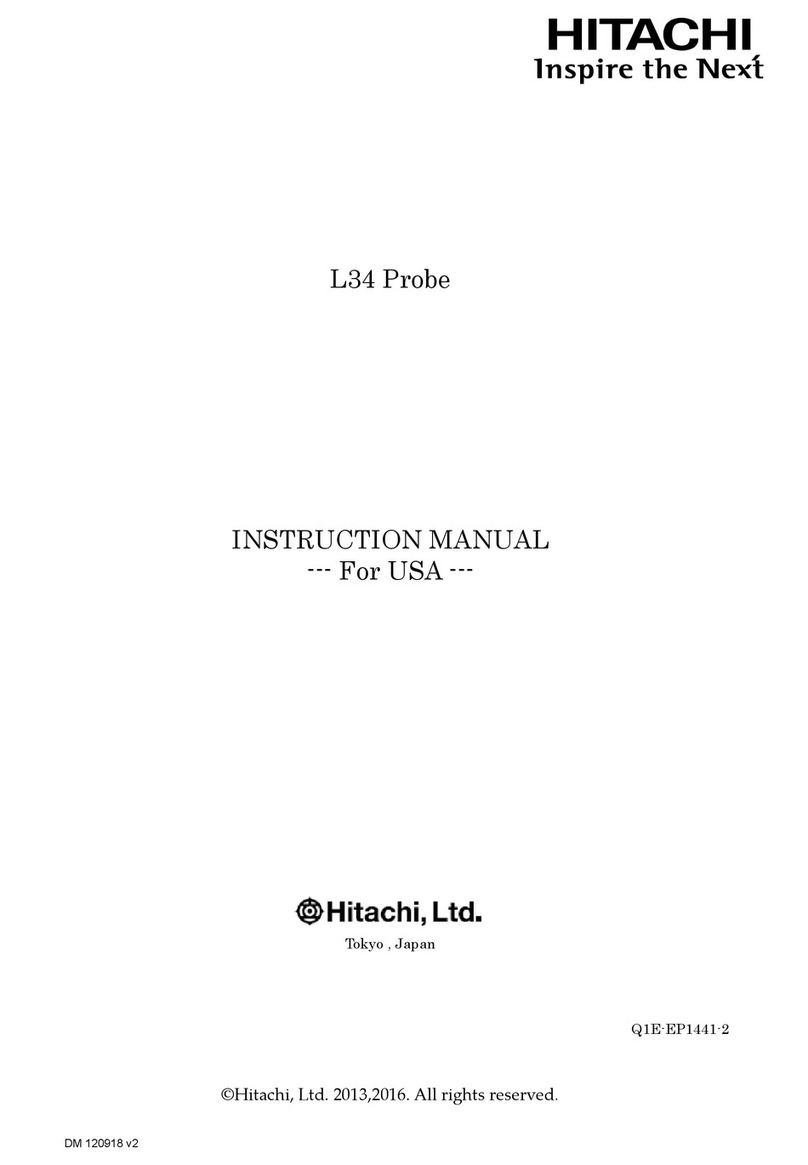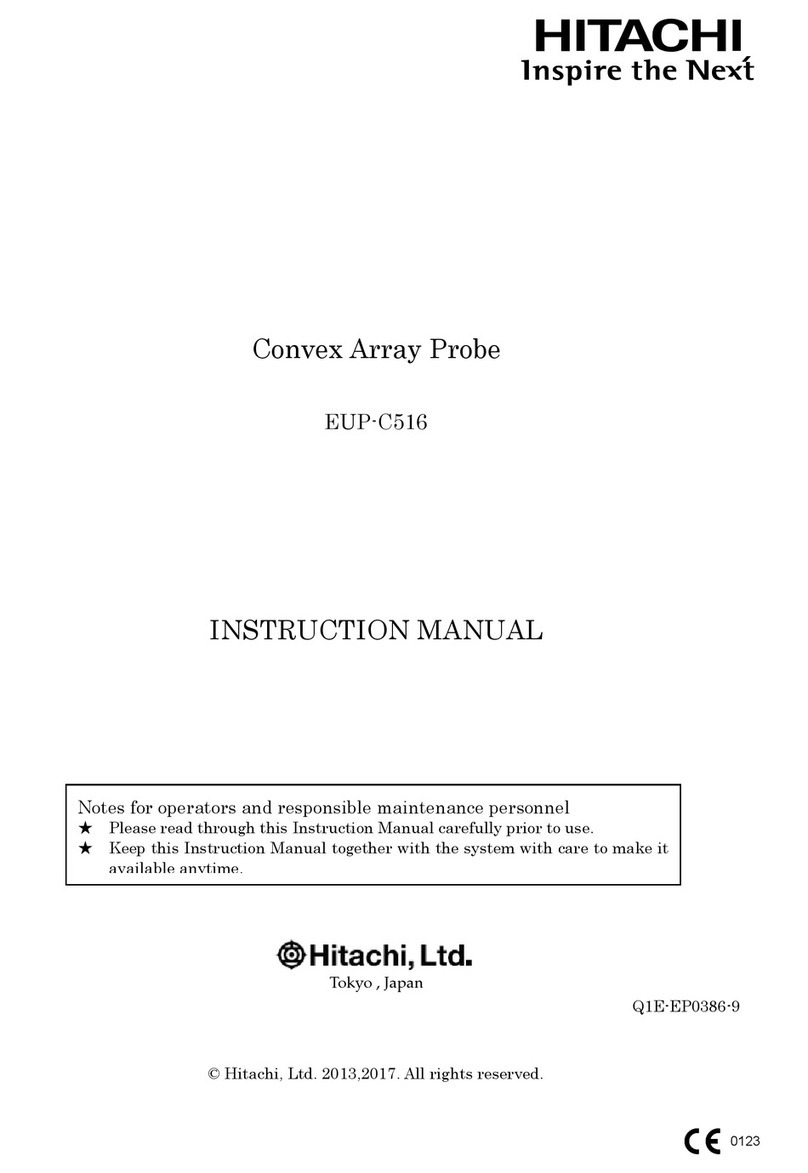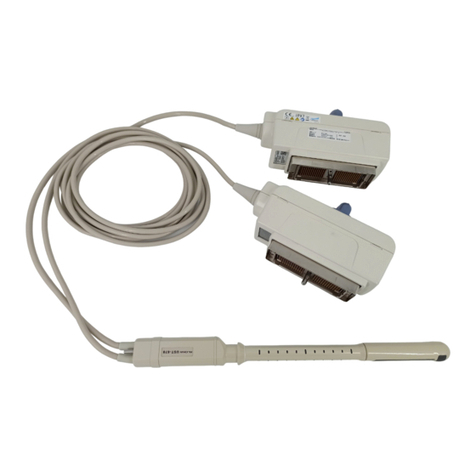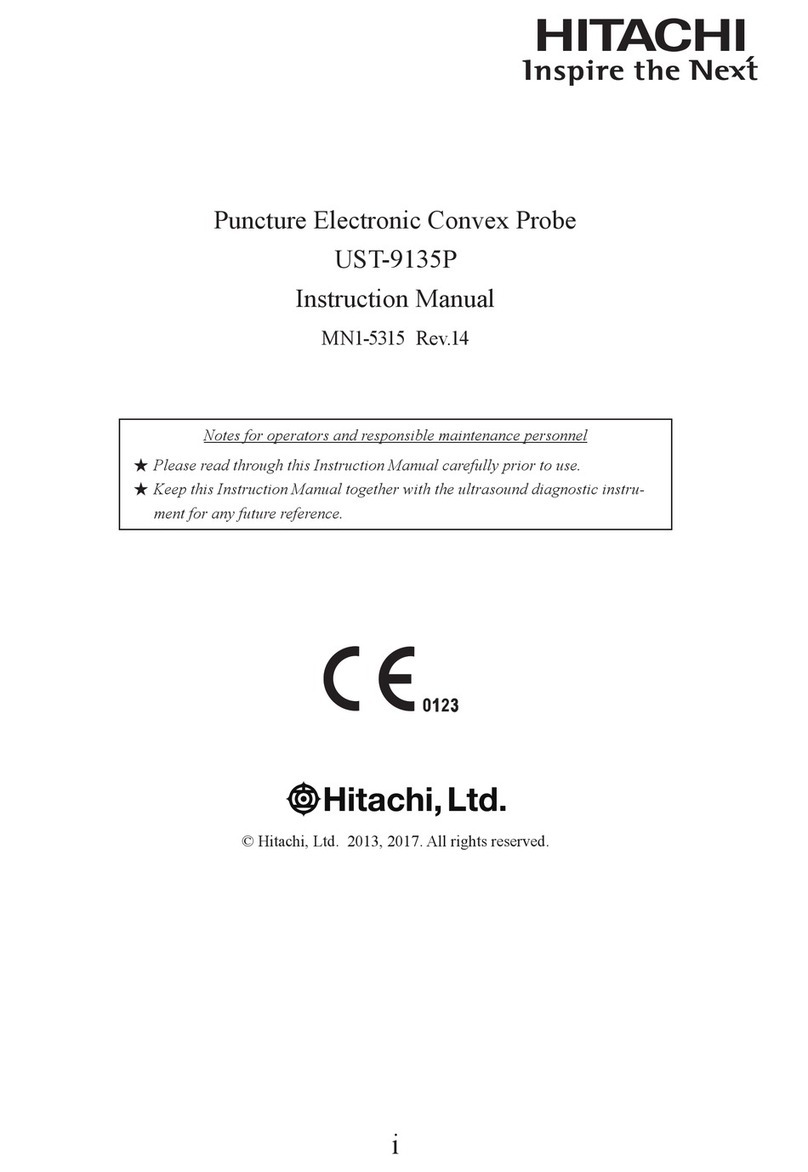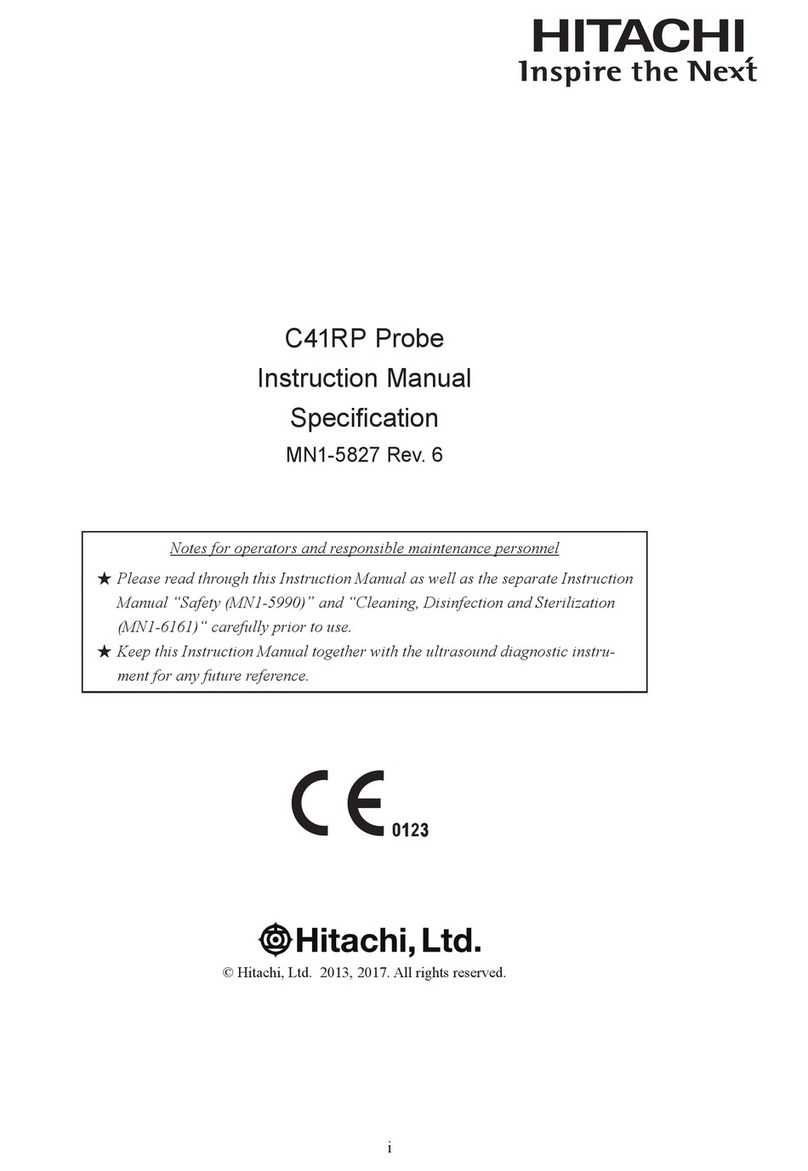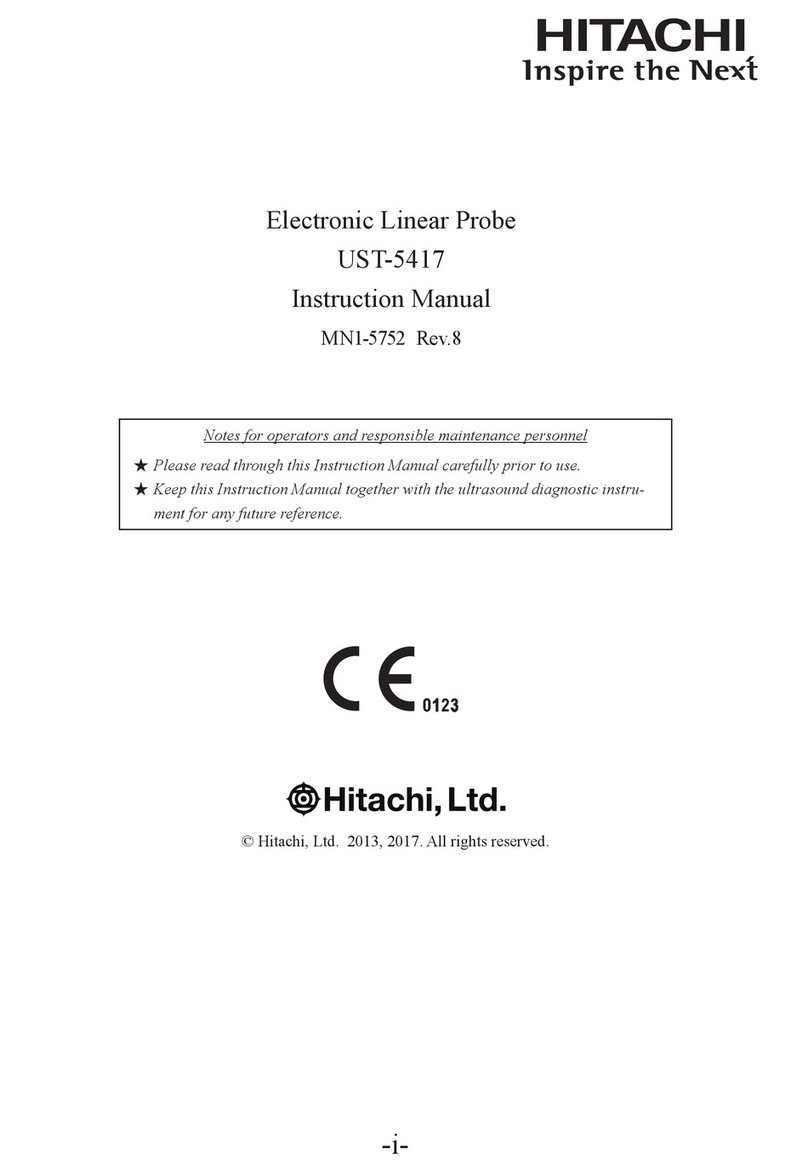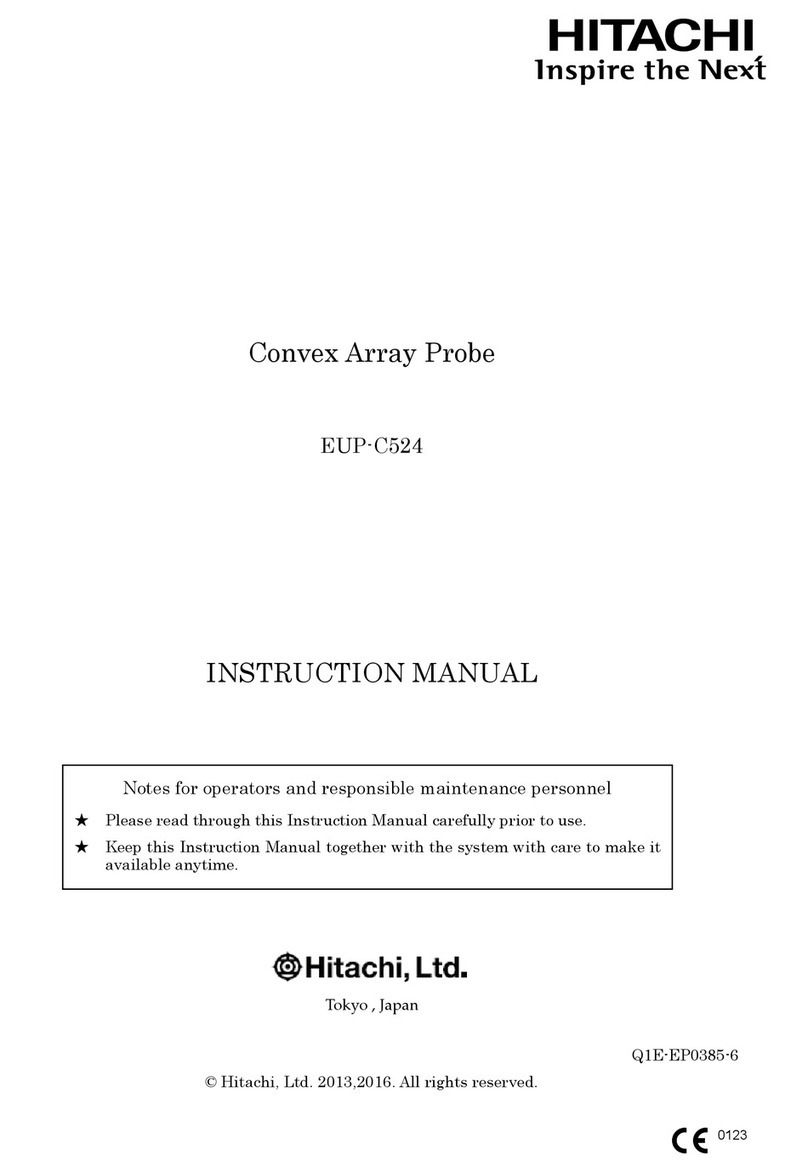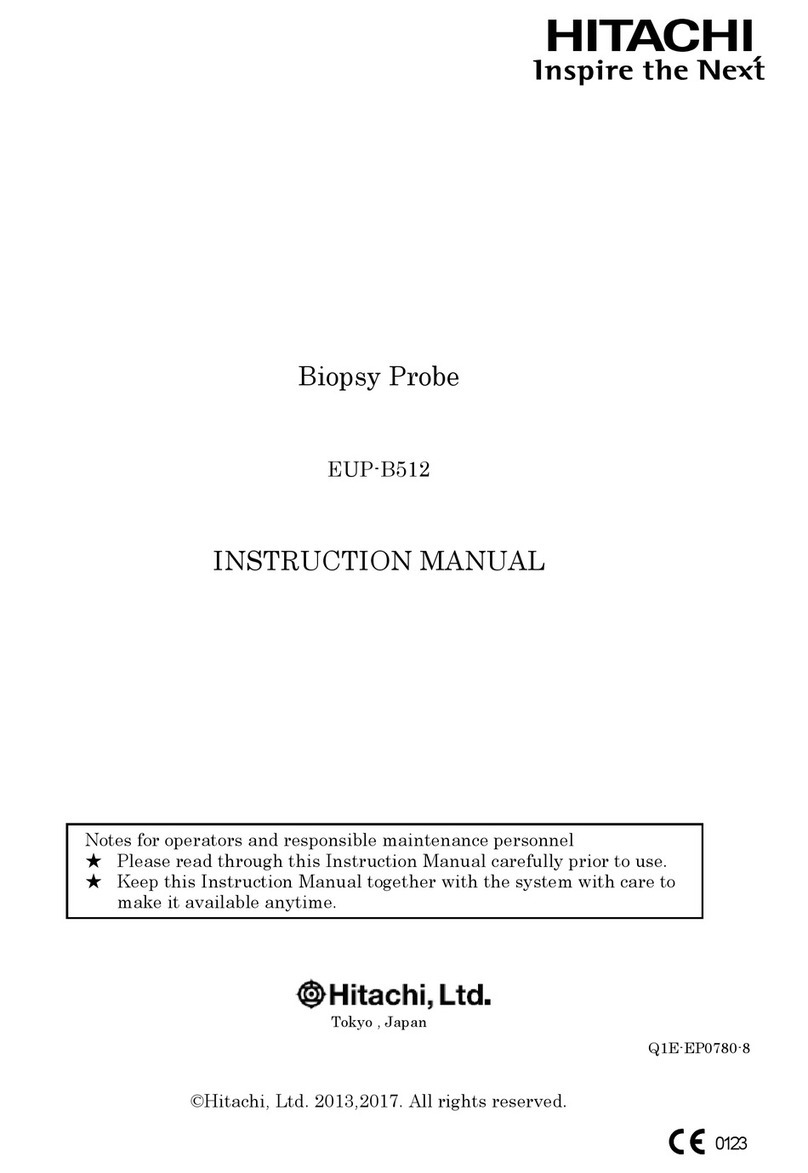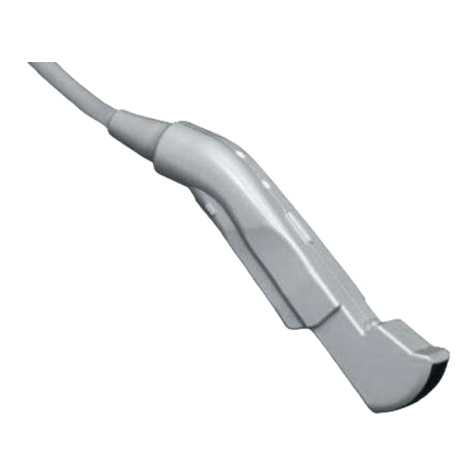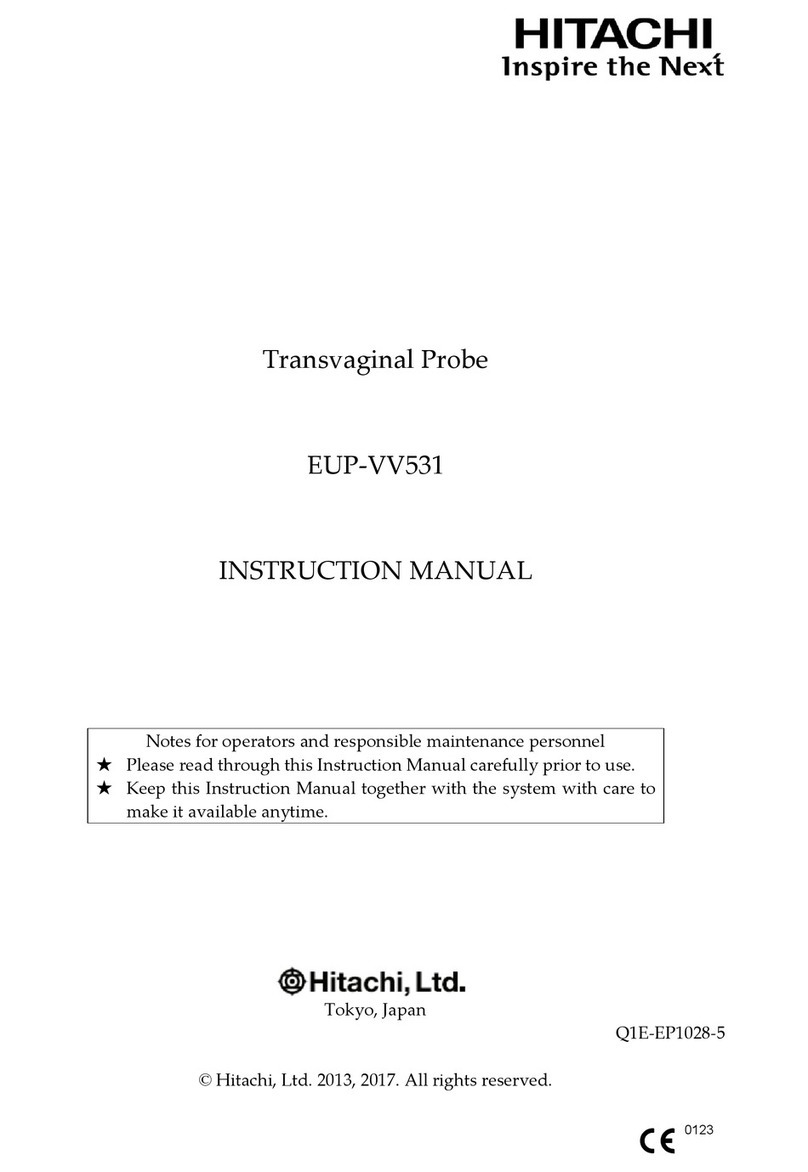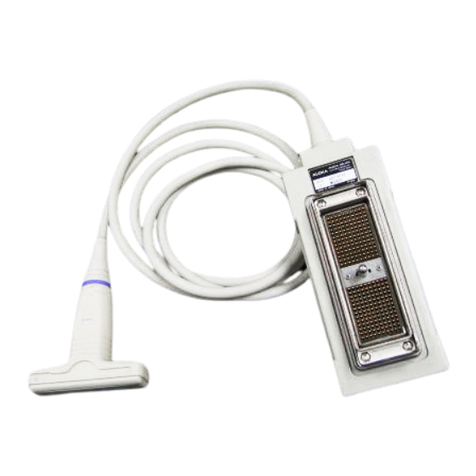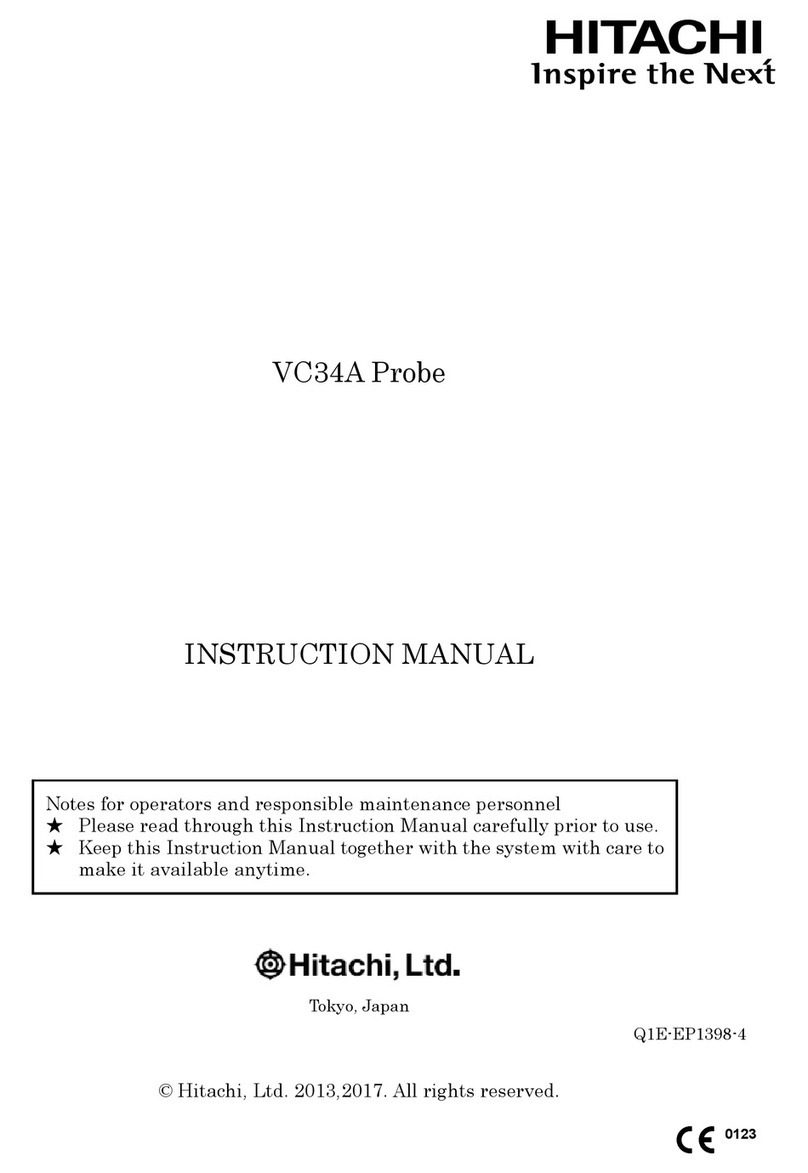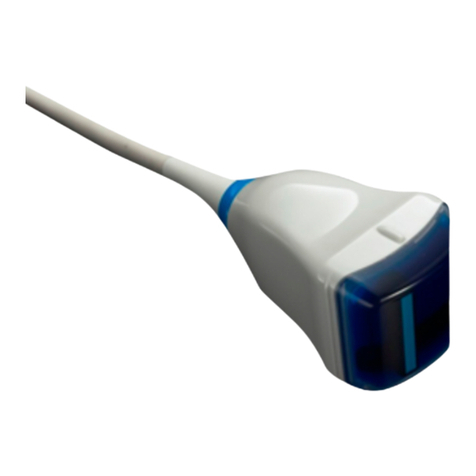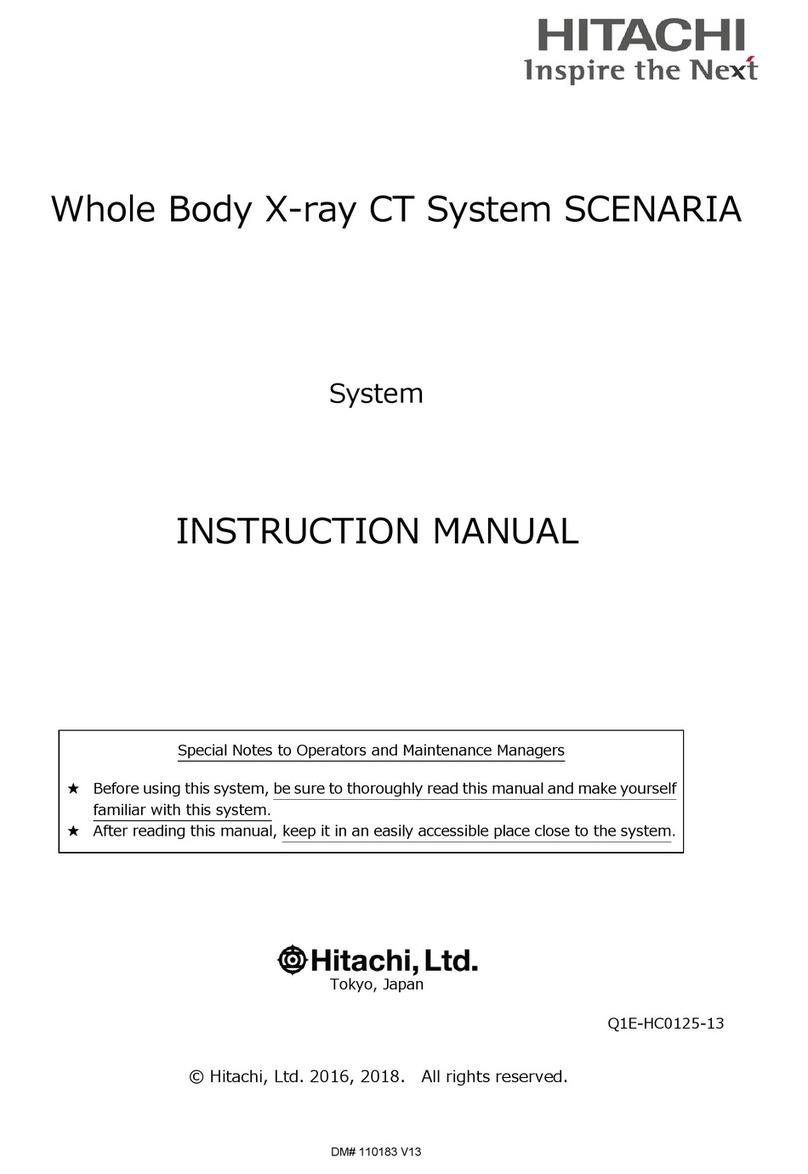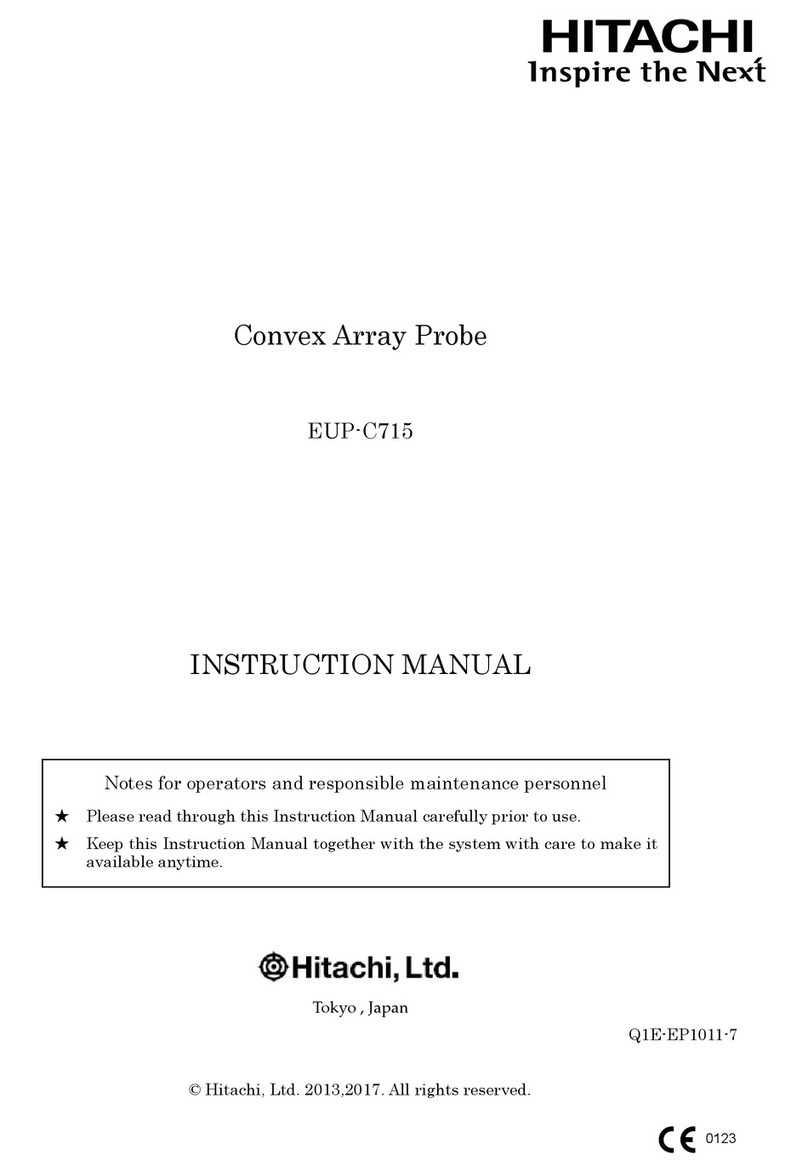
-2-
MN1-1162 Rev. 21
1-2-1. Warnings and safety information
Warning
Follow the information in this manual and the documentation supplied with any equipment used
together with this probe.
Use that is not in accordance with the supplied documentation can result in a serious or moderate
injury, equipment breakdown, or physical damage that impairs operation.
Be sure to preparations for use.
Use of the probe while failing to notice an abnormal condition can result in injury to the operator or
patient. If any abnormalities are noted on the probe in the startup inspection, immediately stop using
it and contact one of our ofces and/or distributor's ofces listed on the back cover. See section 3-1
“Startup inspection” for the startup inspection content and procedure.
Do not use on the eyes.
This probe is not intended for use on the eyes. The acoustic output can have an adverse effect on the
eyes.
Do not attempt to disassemble, modify, or repair the probe.
Electric shock or other unforeseen accidents could result. Contact one of our ofces and/or distribu-
tor's ofces listed on the back cover to request repair.
Clean, disinfect and sterilize before using the probe.
Perform proper cleaning, disinfection and sterilization after use.
Otherwise, there is a risk of infection. Note that the probe is not sterilized at the factory.
Before using the probe rst, be sure to clean, disinfect and sterilize it.
Wear medical gloves during examination.
Conducting examinations with the bare hands can expose the operator to a risk of infection.
Dispose the probe used for patients with Creutzfeldt-Jakob disease.
Otherwise, there is a risk of infection to the operator or patient. Our ultrasound probe is not compatible
with any disinfection/sterilization method for Creutzfeldt-Jakob disease.
When using ultrasound contrast agent, follow the supplied documentation.
Unexpected accidents could result. Check the state of the patient and take appropriate precautions
to avoid side effects.
Do not use the probe fallen on to oor.
Ohterwise, there is a risk of infection. Stop the operation, and perform the procedure in section 8-1
"Safety tests," section 5 "Cleaning, disinfection and sterilization" and section 3-1 "Startup inspection."
Caution
Constantly check for anything abnormal about the patient’s condition and probe.
Continued use without noticing that an abnormal condition has occurred can result in an electric
shock and injury to the operator or patient. If an abnormal condition occurs, immediately move the
probe away from the patient and stop use of the probe.
The probe is vulnerable to damage by impact. Therefore, handle it with care.
There is a risk of damage to the probe when the probe is fallen or hit somewhere.
Do not use this probe with other equipment except for those specically approved in the manual.
Use with unapproved equipment can result in an electric shock, burn, or other injury to the patient or
operator and damage to the probe and the other equipment.
